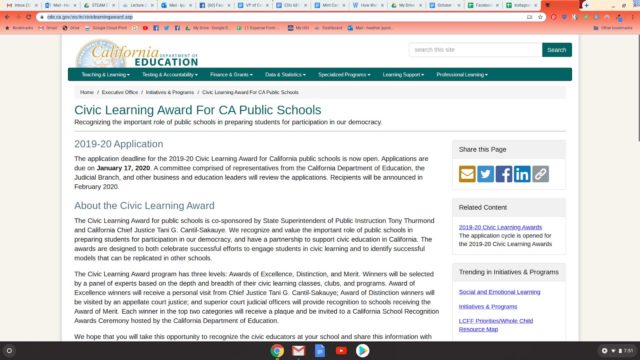Schools play a critical role in educating children for democracy. In fact, a core purpose of public education is to teach children how to be good citizens.
There are lots of ways schools can prepare our children. In fact, there are actually six proven research-based practices that schools should be using.
So here is a quick quiz. How many of the strategies below is your school using to help students be good citizens? Does your school:
- Incorporate current issues and events in the classroom, particularly those that young people view as important to their lives?
- Provide instruction in government, history, law, and democracy – beyond dry listings of facts and events?
- Give students opportunities to apply what they learn through community service that is linked to the formal curriculum and classroom instruction?
- Offer extracurricular activities that give opportunities for young people to get involved in their schools or communities?
- Encourage student participation in school governance?
- Encourage student participation in simulations of democratic processes and procedures (i.e. mock trials and elections)?
How’d your school do? Here is why I ask.
These six proven strategies are measured by the California Civic Learning Award program. Schools that win this award are celebrated and recognized for their efforts to engage students in civic learning. Co-sponsored by the Chief Justice of the California Supreme Court and the California State Superintendent of Public Instruction, the program also identifies models that can be replicated in other schools.
Here’s a nudge. Ask your school to apply. It’s a great way to see how your school measures up. Applications are due January 17, 2020.

Want more ideas on what your school can do? Read Learning to Vote in the Ed100.org blog.